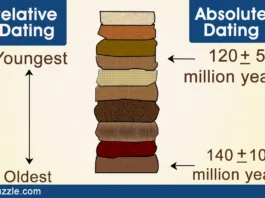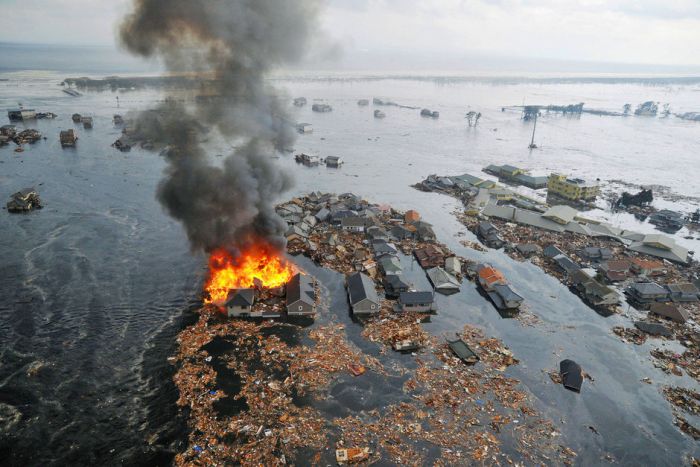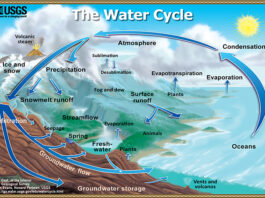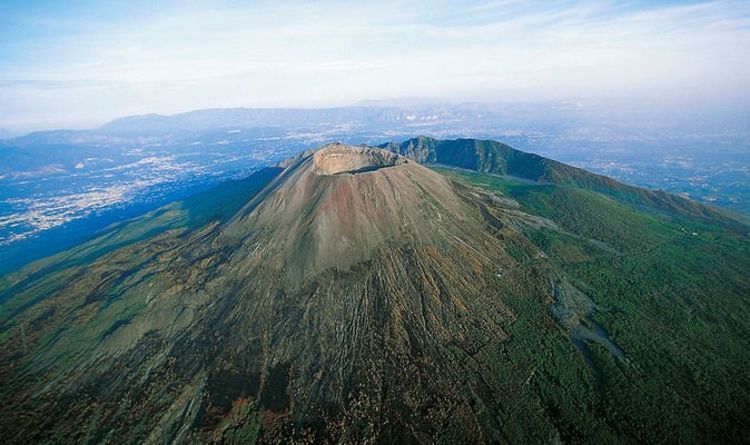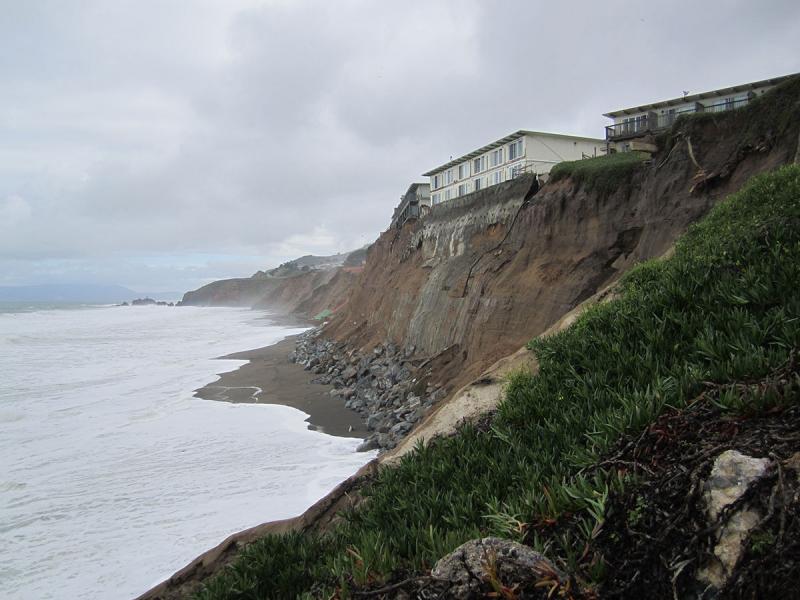Geology is a science of earth. There are many geoscientists from past to present. These people have made great contributions to today’s modern geology.
Contents
- Georgius Agricola
- Nicolaus Steno
- Abraham Gottlob Werner
- What was James Hutton’s contribution to geology?
- John Playfair
- James Hall
- Louis Agassiz
- What was James Dwight Dana’s contribution to geology?
- Clarence Edward Dutton?
- Grove Karl Gilbert
- Thomas Chrowder Chamberlin
- Matthew Fontaine Maury
- Vasily Vasilievich Dokuchaev
- John Wesley Powell
- Robert Elmer Horton
- Who is considered the greatest petrologist of the 20th century?
- William Morris Davis
- Beno Gutenberg
- Preston Cloud
Georgius Agricola

Georgius Agricola (Georg Bauer, 1494-1555) was a German scientist who is also thought of by many as the “father of mineralogy.” Agricola was originally a philologist (a person who studies ancient texts and languages); later, he worked in the greatest mining region of Europe of that time, near Joachimsthal, Germany. As a result of this experience, he produced seven books on geology that set the stage for the development of modern geology two centuries later. His main contributions were compiling all that was known about mining and smelting during his time and suggesting ways to classify minerals based on their observable properties, such as hardness and color
Nicolaus Steno

Nicolaus Steno (Niels Stensen; 1638-1686) was a Danish geologist and anatomist. In 1669, he determined that the so-called “tonguestones” sold on the Mediterranean island of Malta as good luck charms were actually fossilized sharks’ teeth. He also developed what is cal1ed Steno’s law, or the principle ofsuperposition. This theory says 4 that in any given rock layer, the bottom rocks are formed first and are the oldest. Steno proposed two other principles: that rock layers are initially formed horizontally (often called the law of original horizonality), and that every rock outcrop in which only the edges are exposed can be explained by some process, such as erosion or earthquakes (often called the law of concealed stratification), All of these principles are generally held to be true today. Some people consider Steno to be the “father of modern geology,” a title also given to several other early geologists, including James Hutton.
Abraham Gottlob Werner

Abraham Gottlob Werner (1750-1817) was a German geologist and mineralogist who first classified minerals systematically based on their external characteristics. He also was a great believer in neptunism.
What was James Hutton’s contribution to geology?

James Hutton (1726-1797) was a Scottish natural philosopher, but his contribution to geology was even more important: He is considered by some to be the “father of modern geology.” Hutton was also an avid follower of plutonism and the author of Theory ofthe Earth, a book that emphasized several fundamentals of geology, including that the Earth was older than 6,000 years, that subterranean heat creating metamorphic material is just as important a process as rock forming from sediments laid down underwater, and that the exact same agents that are operating today created the landforms of the past, a principle also known as uniformitarianism.
John Playfair

Scottish geologist John Playfair (1748-1819) went against most of his contemporaries in proposing that river valleys were actually carved by streams, an idea that is readily accepted today. Many of his peers believed that valleys formed during cataclysmic upheavals of the land, with the rivers flowing through much later
James Hall

Scottish geologist Sir James Hall (1761- 1832) was one of the first to establish experimental research as an aid in geological investigations. For example, one of his experiments demonstrated how lava forms different kinds of rocks as it cools. Hall was also friends with James Hutton and John Playfair; his rock studies helped confirm many of Hutton’s views regarding intrusive rock formations.
Louis Agassiz

Jean Louis Rodolphe Agassiz (1807-1873), best known simply as Louis Agassiz, was the Swiss-born geologist and paleontologist who introduced the concept of the ice ages, periods of time when glaciers and ice sheets covered much of the Northern Hemisphere. Agassiz announced this astonishing idea in a famous speech to the Swiss Society of Natural Sciences in 1837. “lee ages” was a term he adopted from Karl Schimper (1803-1867), who coined the phrase the year before. Agassiz later moved to the United States, where he was a dominant force in the fields of geology and paleontology until his death. Interestingly, he was one of many scientists who rejected his contemporary Charles Darwin’s theory of natural selection.
What was James Dwight Dana’s contribution to geology?

James Dwight Dana (1813-1895) was an American mineralogist who compiled a book that is still one of the most respected works in mineralogy: Dana’s Manual ofMineralogy. First published in 1862, the book was only one of Dana’s to become a standard reference book in geology. It covers most of the known minerals and metals on Earth and includes their chemical formulas, characteristics, uses, and sundry other useful information.
Clarence Edward Dutton?

Clarence Edward Dutton (1841-1912) was a American geologist who, among other geologic ventures, pioneered the theory of isostasy, which describes how land can rise up as a result of events such as retreating glacial ice sheets. He also worked on a Tertiary history of the Grand Canyon, Arizona, detailing the rock layers of that period in the region in his classic book, Tertiary History orthe Grand Canyon District (1882).
Grove Karl Gilbert

Grove Karl Gilbert (1843-1918)-no known relation to William Gilbert-was an American geologist and geomorphologist who laid the foundations for much of the 20th-century’s advances in geology. His monographs, including The Transportation of Debris by Running Water (1914), greatly contributed to theories of river development. He was also known for making other contributions, such as to theories about glaciation and the formation of lunar craters, as well as to the philosophy of science.
Thomas Chrowder Chamberlin

Thomas Chrowder Chamberlin (1843-1928) was an American geologist whose primary interest was in glacial geology, and he was a proponent of the idea of multiple glaciations. He also established the origin of loess (wind-blown deposits of silt); discovered fossils in 8 Greenland, suggesting that the landmass had experienced an earlier, warmer climate; and developed theories on the Earth’s origin (Chamberlin proposed the planetesimal origin of our planet, going against the more commonly accepted nebula-gascloud theory), fonnation, and growth.
Matthew Fontaine Maury

Matthew Fontaine Maury (1806-1873) was an American oceanographer who wrote the first text on modern oceanography, Physical Geography ofthe Sea and its Meteorology (1855). He also provided guides for ocean currents and trade winds-compiled from ships’ logswhich helped cut sailing time for ships on many routes.
Vasily Vasilievich Dokuchaev

Vasily Vasilievich Dokuchaev (1846-1903; also seen as Vasily Vasilyevich Dokuchaev) was a Hussian geographer who is considered by many scientists to be the founder of modern soil science. He reasoned that soils form by the interaction of climate, vegetation, parent material, and topography over a certain amount of time. He also suggested that soils form zones, but the idea of zonal soils would not be fully developed until later.
John Wesley Powell

John Wesley Powell (1834-1902) was an American geologist, soldier, and administrator who, despite losing an arm in the Civil War, led the first successful expedition into the Grand Canyon. He described the Colorado canyons and led the United States Geological Survey for a time.
Robert Elmer Horton

Hobert Elmer Horton (1875-1945) was an American engineer, hydrologist, and geomorphologist who was one of the first to develop a qualitative way to describe land forms. He also studied the phenomenon of overland flow of rainwater runoff, a process that was named after him (Horton overland flow).
Who is considered the greatest petrologist of the 20th century?

Many scientists consider the greatest petrologist of the 20th century to be Norman Levi Bowen (1887-1956). He developed the idea of phase diagrams of common rock forming minerals-the Bowen’s reaction series is named after him-thus providing scientists with information about how to interpret certain rock formations.
William Morris Davis

William Morris Davis (1859-1934), an American geologist, geographer, and meteorologist, was an authority on landforms. His articles on the subject advanced the field of geomorphology more than anyone in his time. His most influential concept was the “cycle of erosion” theories, an indication that Davis was greatly influenced by Charles Darwin’s organic evolution theory. In a 1883 paper Davis stated that “it seems most probable, that the many pre-existent streams in each river basin concentrated their water in a single channel of overflow, and that this one channel sUlVives-a fine example of natural selection.
” Because of his studies and theories, he is often called the “founder of geomorphology” and the “father of geography” (some scientists consider both subjects to be very similar, if not the same). He also founded the National Geographic Society.
Beno Gutenberg

Beno Gutenberg (1889-1960) was the foremost observational seismologist of the 20th century. He analyzed seismic records, contributing important discoveries of the structu(e of our solid Earth and its atmosphere. He also discovered the precise location of the Earth’s core and identified its elastic properties. Besides a plethora of other major contributions to seismology, Gutenberg discovered the layer between the mantle and outer core, a division that is now named after him. (For more information about the Earth’s layers, see “The Earth’s Layers.”)
Preston Cloud

Preston Ercelle Cloud Jr. (1912-1991) was a biogeologist, paleontologist, and humanist who left a diverse legacy that cuts across many scientific and other disciplines. A5 an historical geologist, he contributed to our understanding of the atmosphere’s evo~ lution, oceans, and Earth’s crust; he also added to the understanding of the evolution of life. In addition, he was concerned about how humans would continue to evolve in this environment, noting problems with population increases and related activities (for example, pollution) that could greatly affect our planet.

